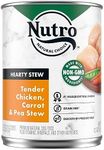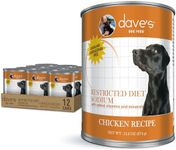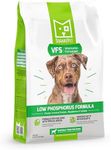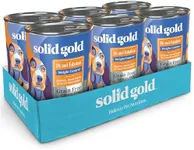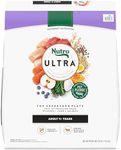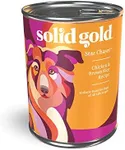Buying Guide for the Best Low Sodium Dog Food
Choosing the right low-sodium dog food for your pet is crucial for their health, especially if they have specific dietary needs or medical conditions. Low-sodium dog food can help manage conditions like heart disease, kidney issues, and hypertension. When selecting the best option, it's important to understand the key specifications and how they relate to your dog's health and lifestyle. Here are the key specs to consider and how to navigate them to find the best fit for your furry friend.Sodium ContentSodium content is the amount of sodium present in the dog food. This is important because high sodium levels can exacerbate health issues like heart disease and kidney problems. Low-sodium dog food typically contains less than 0.3% sodium on a dry matter basis. For dogs with severe health issues, you might need food with even lower sodium levels, around 0.1% or less. If your dog is generally healthy but you want to maintain a low-sodium diet, look for foods with sodium levels between 0.2% and 0.3%. Always consult your vet to determine the appropriate sodium level for your dog's specific needs.
Protein SourceThe protein source in dog food is crucial for providing essential nutrients and maintaining muscle mass. Common protein sources include chicken, beef, fish, and lamb. For dogs with specific health conditions, novel protein sources like venison or duck might be recommended to avoid allergens. If your dog has no specific protein allergies, choose a high-quality protein source that they enjoy and that supports their overall health. Ensure the protein content is adequate to meet your dog's energy needs, typically around 18-30% for adult dogs.
Fat ContentFat content in dog food provides energy and supports skin and coat health. Low-sodium dog foods often have moderate fat levels to balance the diet. For most adult dogs, a fat content of 10-15% is suitable. If your dog is overweight or has pancreatitis, you might need a lower fat content, around 7-10%. Conversely, active or working dogs may require higher fat levels, up to 20%. Choose a fat content that aligns with your dog's activity level and health status.
Fiber ContentFiber content aids in digestion and helps maintain a healthy weight. Low-sodium dog foods often include fiber sources like beet pulp, pumpkin, or brown rice. For most dogs, a fiber content of 2-5% is adequate. If your dog has digestive issues or needs to lose weight, higher fiber content, around 6-10%, might be beneficial. Ensure the fiber source is gentle on your dog's stomach and supports their digestive health.
Ingredients QualityThe quality of ingredients in dog food affects its nutritional value and digestibility. Look for dog foods with high-quality, natural ingredients and avoid those with artificial preservatives, colors, or flavors. Whole foods like real meat, vegetables, and grains are preferable. If your dog has allergies or sensitivities, choose foods with limited ingredients to minimize the risk of adverse reactions. High-quality ingredients ensure your dog gets the necessary nutrients without unnecessary fillers.
AAFCO CertificationThe Association of American Feed Control Officials (AAFCO) certification ensures that the dog food meets established nutritional standards. This is important because it guarantees that the food provides a balanced diet for your dog. Look for dog foods labeled as 'complete and balanced' according to AAFCO standards. This certification indicates that the food has undergone rigorous testing and meets the nutritional needs of your dog at their specific life stage (puppy, adult, senior).
